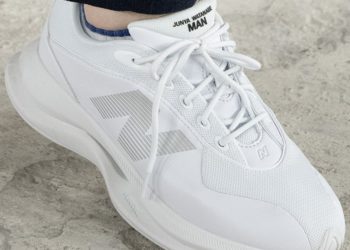Like pretty much every other time the Dodgers have found themselves in a self-made mess, the task of downplaying a major problem once again was made the responsibility of manager Dave Roberts.
So, in the aftermath of a deflating 11-1 defeat by the Oakland Athletics on Tuesday night, Roberts trudged into the interview room at Dodger Stadium and applied a good old Stan Kasten spin to Roki Sasaki’s move to the 15-day injured list.
The point relayed by Roberts was basically this: Sasaki underwhelmed in his eight major league starts because of a shoulder pain that he kept secret from the Dodgers “for the last weeks,” and not because the 23-year-old rookie right-hander wasn’t as good as they previously thought.
“He hasn’t been as productive as he would have liked because he was compromised,” said Roberts, who added that Sasaki revealed his condition to the team after his most recent start.
The explanation raised an equally alarming possibility, however.
If Roberts’ story was accurate, and Sasaki experienced a shoulder impingement similar to the one that slowed him down last year in Japan, wouldn’t that point to a chronic problem?
As it was, Sasaki was already viewed as a high injury risk. He never remained healthy for an entire season with the Chiba Lotte Marines.
At this point, what’s worse? That Sasaki’s lack of control and decline in fastball velocity were because of a chronic shoulder issue? Or because he just was too raw to compete in the major leagues?
Either scenario would be problematic.
So, what now?
As much as the Dodgers sold Sasaki on how they could one day guide him to a Cy Young Award, his future isn’t their only priority. They also have to consider what’s best for their team, which is positioned to become baseball’s first repeat champion in a quarter century.
Even if the Dodgers acknowledge that Sasaki is more of a long-term project than a short-term solution and want to send him to the minor leagues when he returns, they might not have the luxury of doing so. They have signed four potential frontline pitchers in the last two years, and three of them are currently on the injured list — Sasaki, Blake Snell and Tyler Glasnow. The other, two-way player Shohei Ohtani, isn’t expected to pitch until after the All-Star break.
Snell was examined by a team doctor on Tuesday but the team didn’t provide any details about his condition. Glasnow played catch but Roberts didn’t provide a timeline for his return.
The rotation is in such a state of ruin that not only were the Dodgers forced to start Landon Knack on Tuesday, they were desperately awaiting the return of 37-year-old Clayton Kershaw four days later.
Roberts described Sasaki’s injury as “benign” but didn’t say when he might resume throwing. The manager insisted there were no thoughts of sending him to the minors, despite Sasaki posting a 4.72 earned-run average and completing six innings in just one start.
“I think our goal is to get him healthy, get him strong, make sure his delivery is sound for him to pitch for us,” Roberts said.
In other words, Sasaki will return to the mound in the major leagues. He will have to gain familiarity with low-quality American baseballs in the major leagues. He will have to become more comfortable with the pitch clock in the major leagues. He will have to strengthen his body to prevent future injuries in the major leagues. He will have to learn to throw something other than a fastball, forkball and slider in the major leagues.
The Dodgers knew Sasaki would require an adjustment period, but they couldn’t have imagined anything this drastic.
The introductory news conference they staged for Sasaki in January was matched in scale in recent years only by Ohtani’s and Yoshinobu Yamamoto’s. That was where president of baseball operations Andrew Friedman declared Sasaki would start the season in the Dodgers’ rotation, and general manager Brandon Gomes compared him to Paul Skenes of the Pittsburgh Pirates.
Back then, the Dodgers’ plan for Sasaki was simple: Insert him into the rotation and watch him develop into one of the best pitchers in baseball.
Sasaki can still become everything the Dodgers envisioned, but his path to greatness has become infinitely more complicated. Roberts remained characteristically upbeat, saying Sasaki concealed his shoulder problems not because he was selfish but because he didn’t want to let down an injury-ravaged team.
“He’s a great teammate,” Roberts said.
With his rotation crumbling, Roberts didn’t have the luxury of viewing the situation any other way.
The post Hernández: Roki Sasaki’s shoulder issue leaves Dodgers in a familiar and problematic position appeared first on Los Angeles Times.




